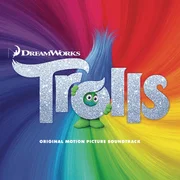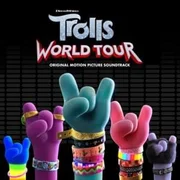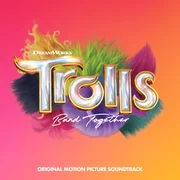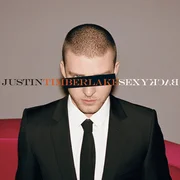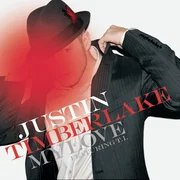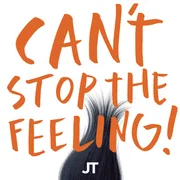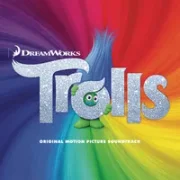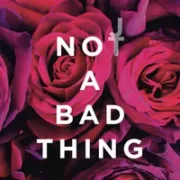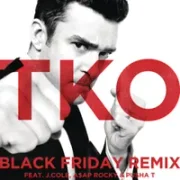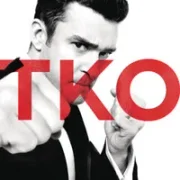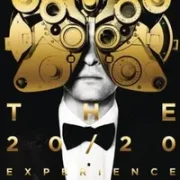History of Rap (Parte 3) de Justin Timberlake
Letra de History of Rap (Parte 3)
CM Henty
--------------------------
Beats by Dr. Dre. By now I'm sure anyone reading this has heard of them. And probably half of you own a pair. And believe me - Dre should be thanking all of you for your or more purchase. Why? Beats made up million of the million he earned last year. And that million figure made him the top earner in all of music in 2012.
Every year, Forbes releases its list of the world’s 25 highest-paid musicians. The traditional music supernovas - acts like U2, Paul McCartney and Elton John - appear regularly on this list, of course. But in last year’s rankings, thanks to the headphones, it was Dr. Dre who became the first hip-hop artist to earn the Forbes number one spot.
And while most artists on that list made their money through music and concerts, Dre made his by extending his brand to a product. He’s not alone in this way. Because of the music’s influence on popular culture, the blessing of any big name hip-hop artist can now often make or break a business or an idea.
That’s why, just like big name celebrities and athletes, many of the world’s most successful hip-hop artists use their power of influence to score lucrative endorsement deals with brands and start their own companies.
In hip-hop today, the job of a successful artist involves not only making music but also cashing in on star power. In 2013, big name hip-hop artists are not only musicians. They are major ambassadors for brands and designing their own.
Hip-hop and brand partnerships are nothing new, of course. The business potential of the pair was first realized in the fashion industry when Run DMC, in 1986, joined forces with Adidas to sell sneakers. And during the 1990’s and into the 2000’s, hip-hop helped transform upstart apparel companies - like Tommy Hilfiger and FUBU - into multi million dollar businesses.
But the difference today is that hip-hop now flexes its marketing muscle for almost any kind of product in any industry. Many companies - especially big companies with household names - are increasingly shelling out their marketing money to members of the rap community.
In 2011, Coors Light, for example, vowed to take over Budweiser’s coveted spot as the number 2 best selling U.S beer. And within one year after making that promise, they did. One reason for the success was their massive million marketing blitz that year, a lot of which involved enlisting Ice Cube to represent the brand in popular commercials like this:
In 2012, we saw hip-hop partner with a few more big name brands. Pepsi signed on Nicki Minaj as the next face of their new soda line with a multi-million dollar deal. Mountain Dew landed Lil Wayne in an endorsement deal that was the biggest in the brand's history and the first ever for Weezy (Mountain Dew recently ended that relationship). Gillette paid Andre 3000 to become one of the three “Masters of Style” in their commercials (Adrien Brody and Gael García Bernal were the other two “masters”). And Microsoft partnered with Wiz Khalifa in a widely aired commercial for their search engine, Bing.
Every year we see more and more companies looking to expand their reach and messaging by adding hip-hop names to their roster of paid endorsers.
And if you’re an artist, this is great news. For more than twenty years, endorsements have become a lucrative side business for those in hip-hop music. If you look at this Complex list of the rap artists with the highest net worth, you’ll notice that almost every single one of them has had their hand in some sort of endorsement deal at some point in their career.
But how has this happened? How have the paid endorsements and the marketing gigs become significantly important to the business of hip-hop?
Well, there are two trends at work here.
The first is the effect of digital music, mixtapes and the Internet.
In the early 2000s, the arrival of the iPod and iTunes brought a change in how we purchase and listen to music. More of us began to purchase tracks individually at 99 cents a piece instead of buying bundles of songs in the form of a CD. Or we could, of course, explore the Internet and download many songs for “free.”
For music lovers, all of this was a blessing. For music makers - the artists and the labels - it wasn’t. The decade of the 2000s saw total music revenue go from .6 billion to 6.3 billion - about a 57% decrease.
But that did not mean we were listening less - far from it. Because the cost of music had dropped so dramatically, we were actually listening a lot more. Keep in mind - illegal downloading was and still is only a part of that. In 2013, there’s an abundance of free, legal music - rap music, especially - that can be found on YouTube and SoundCloud. There’s also the massive hip-hop blogosphere that now plays an important role in distributing and promoting free mixtapes and free singles.
For the artists, the Internet has made distribution easier (a label is no longer a must when it comes to reaching listeners). For the rest of us, it has meant greater access to more music than ever before.
There are now so many choices for us as listeners that artists must release their music for free in order to build a following and stay relevant (even Justin Timberlake streamed his new album, 20/20 vision, for free to help build a buzz).
In an era when cheap and free music is the norm, artists now have good reason to supplement their income with endorsement money. If no one’s paying for music like they used to, how else can artists expect to rake in the kind of cash worthy of bragging rights in music videos like this and this?
But don't forget - labels are pushing for these endorsement deals, too. In an industry that is struggling for cash, it's one reason why they're signing many new acts to "360” record deals - where they take a slice of an artist's concert, music, merchandise, and endorsement earnings.
The second important trend, though, is that hip-hop's status and influence in popular culture has evolved tremendously in the last 25 years.
Hip-hop as a movement has evolved from small NYC sub-culture to an accepted component of mainstream American culture. It’s also now a movement with a true global reach. Jay-Z and Kanye West’s "Watch the Throne" was the #1 album in 23 different countries at one point. Europe is now a regular touring stop for any big name artist in the game.
What does all of this mean? It means that rap artists today have more diverse audiences and bigger fan bases. These things, needless to say, are critical when it comes to endorsement deals. The greater the fan base of an artist, the more attractive that artist is to a brand looking for exposure.
We saw this play out with Eminem and Chrysler. Given the public backlash Eminem received in the late 1990s and early 2000s, it’s hard to imagine that any big American company would have partnered with him to help sell their products. Fast forward to 2011 and Eminem has sold more than 100 million records worldwide. He’s now a household name with millions upon millions of fans. Chrysler then decides to run the longest ad in Super Bowl history featuring Eminem with his “Lose Yourself” sample in the background.
Once it was clear that Eminem had a following that could not be ignored, Corporate America changed its tune.
But an artist today, interestingly enough, doesn’t need to sell many, many records, like Eminem, to land a lucrative deal. Some artists who fail to sell records still land big time endorsement contracts because they have maintained a following through their release of free music. The rapper Cassidy’s last few studio albums, for example, have not sold very well by conventional, mainstream standards. But he’s kept an audience through his relentless hustle of free freestyles and mixtapes that he puts up online.
And last year when he released a remix of PSY’s “Gangnam Style” and called it “Condom Style”, he received a reported seven-figure endorsement agreement with Trojan Condoms. How sick is that? Nothing against Cassidy, but that deal probably earned him a lot more than his last album.
-------------------------------
Beer, cars, or condoms; it doesn’t matter the product. What’s clear is that with many artists - whether of radio or mixtape fame - leveraging their marketing power for cash, we’re witnessing a full-on monetization of hip-hop culture.
The music and the culture surrounding the music are now both commercialized.
And it has happened because endorsements generally work for both the artist and the brand. For the artist it provides a valuable revenue stream in an era of decreased music sales. For the brand it gives them much needed attention and goodwill in an era when it’s increasingly difficult to get any of that from us as consumers.
But here’s one legitimate question - do brand endorsements threaten hip-hop as an art form?
A foundation of rap’s appeal as poetic art is its authenticity - especially the authenticity of the stories told in the music and the artists who tell them. It’s why Jay-Z is constantly reminding us in his music that his story - Marcy Projects drug dealer to hip-hop demigod - is real. Credibility matters in hip-hop.
It also matters in marketing.
Because of all the choices out there, as consumers we are increasingly looking to friends and influencers - people we trust, in other words - when deciding what to buy. Today’s rap artists are some of our culture’s biggest influencers. And they often have a high level of trust with their fans because their lyrics and their stories tend to be personal. So for those reasons, an endorsement from a hip-hop artist, specifically, can carry a lot of marketing value for a brand.
But what happens when artists simply do deals for the money and the buzz? What if they don’t really believe in the product they’re endorsing and tell their fans to go out and buy it anyway?
Can the commercialization of hip-hop culture also have the effect of watering down its claim to authenticity?
Without mentioning any names, we've seen some artists in hip-hop rep one brand but then quickly switch to another in the same industry if there's more money involved. We've seen artists who were known users of a particular product but then denounce their prior use of it once they're offered an official endorsement deal with that product's competitor. We've seen artists who lend their name to almost any kind of product or brand, regardless of its relevance to their fan base.
But it's a complicated question. Combining art (music) with the realities of big business can be difficult. Like Che Guevara with bling on, the issue is complex.
Because on one hand, that hustler "by any means,” competitive mentality is in and of itself embedded in hip-hop culture and its music. “It’s all in the game,” as Omar from The Wire would always say. Get money where you can find it.
But here’s the thing - in today’s hyper-connected world, it’s harder to fool us. And for that reason, as consumers we reward authenticity and honesty in our brands more than ever.
Just think about the success behind Beats by Dre. If there’s one person we can all trust when it comes to sound, it’s Dre. His endorsement feels credible because he’s one of the greatest rap producers of all time. And because of that, we’re not just buying headphones when we buy Beats, we’re also buying into Dre’s co-sign (his name is on the product, after all). As Kevin Liles, former president of Def Jam Recordings, once said in an interview with Forbes: “The brands are so aligned, Dre and Beats, it’s just who he is.”
Brand alignment, when it comes to endorsements, is when the values of an artist fit with the idea and purpose of a product. Endorsements that have brand alignment look credible, especially to fans. Those that do not look like an attempt to slap a famous name on a product to sell more.
And that's the challenge when it comes to endorsements in hip-hop. A high profile endorsement can offer a lot of money, of course, but if it lacks alignment then the entertainer can risk diminishing his or her credibility as an artist.
Some artists, though, avoid this problem all together. Instead of getting paid to endorse another's brand, they get paid when they see success in designing their own.
This new, evolving breed of rap artist is part musician and part designer. They align their artistry in everything they create by combining their careers in music with pursuits in fashion, product design, graphic art, or cinematography
An artist like Pharell Williams, for example, isn’t just a musician who produces hit records, he’s also a designer that has a big hand in creating clothing, fashion accessories, and industrial products.
Kanye West isn’t just a twenty-one-time Grammy award winner, he also designs a women’s clothing line, high-end footwear for Louis Vuitton, and limited edition sneakers for Nike. He’s also on a mission to pool all of his artistic efforts under one umbrella creative agency called DONDA.
And Tyler, the Creator isn’t just an award-winning artist who’s co-founded the alternative hip-hop group, Odd Future; he also designs all of the group’s clothing, merchandise, and album artwork. And he even directs his own music videos. His most recent piece of video work, "IFHY", got a million YouTube hits within a few of days and received big praise from some big names in the hip-hop community for its originality.
Those are just three big-name examples. In 2013, the creative outlets of many rap artists now extend beyond music. And if you’re a fan of hip-hop, that’s probably a good thing.
Why?
Because for hip-hop to have cultural staying power, it must continue to move forward creatively and commercially.
When you see Fortune 500 companies handing out million dollar endorsement deals, that's when you know a movement has reached a particular high point in popular culture. But companies will quickly pull that money away if hip-hop loses its mass appeal.
Remember - rock 'n' roll once dominated mainstream culture in the same way that hip-hop does now. For hip-hop to avoid rock's fate, it must continue to produce new art that holds the interest of current fans and attracts new ones. We now have, thanks to the Internet, many different forms of entertainment now competing for our limited time. To remain relevant amid all the clutter, hip-hop must create new art that captures our attention and keeps us talking. And really, if you think about it, new art makes all of the surrounding business - including endorsements - possible.
But again, as some in hip-hop are showing, that art can take many new and different forms. It's no longer music alone that is stretching the movement's creative boundaries. And it's no longer music alone that's making artists rich. The business of design, like endorsements, can offer artists the financial means to adapt to the new realities of the music industry.
For much of hip-hop's history, artists have leveraged their influence to market themselves for other brands. And that will probably continue. But in 2013 and beyond, expect to see more and more artists use their popularity in music as way to help market their creative impulses in design as well. Expect some of them to make a lot of money off it, too. And if that happens, expect to see hip-hop #1 on that Forbes top 25 list again soon.
CM Henty
Traducción de History of Rap (Parte 3)
Letra traducida a Español
Beats de Dr. Dre. A estas alturas estoy seguro de que cualquiera que esté leyendo esto ha oído hablar de ellos. Y probablemente la mitad de ustedes posea un par. Y créanme: Dre debería estar agradecido a todos ustedes por su compra de o más. Por qué? Los Beats representaron millones de los millones que ganó el año pasado. Y esa cifra de millones lo convirtió en el que más ganó en toda la música en 2012.
Todos los años, Forbes publica su lista de los 25 músicos mejor pagados del mundo. Los supernovas de la música tradicional, como U2, Paul McCartney y Elton John, aparecen regularmente en esta lista, por supuesto. Pero en la clasificación del año pasado, gracias a los auriculares, fue Dr. Dre quien se convirtió en el primer artista de hip-hop en alcanzar el primer puesto de Forbes.
Y mientras la mayoría de los artistas de esa lista obtuvieron su dinero a través de la música y los conciertos, Dre hizo el suyo al extender su marca a un producto. No está solo en esta forma. Debido a la influencia de la música en la cultura popular, la bendición de cualquier artista de hip-hop de renombre puede, a menudo, hacer o deshacer un negocio o una idea.
Es por eso que, al igual que las celebridades y los atletas de renombre, muchos de los artistas de hip-hop más exitosos del mundo utilizan su poder de influencia para firmar contratos de patrocinio lucrativos con marcas y comenzar sus propias empresas.
En el hip-hop actual, el trabajo de un artista exitoso implica no solo hacer música, sino también sacar provecho del poder de estrella. En 2013, los artistas de hip-hop de renombre no son solo músicos. Son embajadores importantes de marcas y diseñan las suyas.
Las asociaciones entre hip-hop y marcas no son nada nuevo, por supuesto. El potencial comercial de esta pareja se hizo evidente por primera vez en la industria de la moda cuando Run DMC, en 1986, se unió a Adidas para vender zapatillas. Y durante los años 90 y hasta los años 2000, el hip-hop ayudó a transformar empresas emergentes de ropa, como Tommy Hilfiger y FUBU, en negocios multimillonarios.
Pero la diferencia hoy en día es que el hip-hop ahora ejerce su influencia de marketing para casi cualquier tipo de producto en cualquier industria. Muchas empresas, especialmente grandes empresas con nombres conocidos, están destinando cada vez más su dinero de marketing a miembros de la comunidad del rap.
En 2011, Coors Light, por ejemplo, prometió tomar el codiciado puesto de la cerveza más vendida en EE. UU. a Budweiser. Y, dentro de un año después de hacer esa promesa, lo hicieron. Una razón para el éxito fue su enorme campaña de marketing de millones ese año, gran parte de la cual implicaba contratar a Ice Cube para representar la marca en comerciales populares como este:
En 2012, vimos al hip-hop asociarse con algunas marcas de renombre. Pepsi fichó a Nicki Minaj como el rostro de su nueva línea de refrescos con un acuerdo de varios millones de dólares. Mountain Dew consiguió a Lil Wayne en un contrato de patrocinio que fue el más grande en la historia de la marca y el primero para Weezy (Mountain Dew recientemente terminó esa relación). Gillette pagó a André 3000 para convertirse en uno de los tres "Maestros del Estilo" en sus comerciales (Adrien Brody y Gael García Bernal eran los otros dos "maestros"). Y Microsoft se asoció con Wiz Khalifa en un comercial ampliamente difundido para su motor de búsqueda, Bing.
Cada año vemos a más y más empresas buscando ampliar su alcance y mensaje al agregar nombres del hip-hop a su lista de patrocinadores pagados.
Y si eres un artista, esta es una gran noticia. Durante más de veinte años, los patrocinios se han convertido en un lucrativo negocio secundario para aquellos en la música de hip-hop. Si observas esta lista de Complex de los artistas de rap con el mayor patrimonio neto, notarás que casi todos ellos han tenido
0
0
Tendencias de esta semana
SENTIMENTAL
Gims
Soda Pop
Saja Boys
caperuza
Fuerza Regida
NOW OR NEVER
Tkandz
El Mayor de los Ranas
Victor Valverde
Bad News
Zach Bryan
Fight Til I’m Good Enough ft. Elsie Lovelock, Michael Kovach & Allanah Fitzgerald
The Living Tombstone
ANSIEDAD
Fuerza Regida
gone gone gone
David Guetta
Niño
Milo J
Nada Tengo
Divididos
Back in Blood ft. Lil Durk
Pooh Shiesty
Questa domenica
Olly
melodrama
Disiz
Francés Limón
Los Enanitos Verdes
